-

Oct
17
Interpretive Summary: Impacts of increasing levels of salt on intake, digestion, and rumen fermentation with beef cattle consuming low-quality forages

Beef cattle are often provided supplements to compensate for seasonal nutrient deficiencies. However, one of the challenges to strategic supplementation is controlling individual intake variation. The most common method to regulate intake of self-fed supplements is the use of salt.
Read more
-

Oct
17
Interpretive Summary: Effects of fermented soybean meal and supplemental methionine and lysine on growth, digestibility, body composition, and amino acid composition of Beluga (Huso huso)
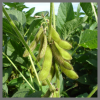
The growing aquaculture production can greatly affect the aquafeed industry and cause problems, especially in providing fish meal (FM) for diets. Price and production instability in FM can restrict producers’ ability to produce aquafeed. Therefore, it is advised to use plant proteins such as soybean meal (SBM), which has high protein, reasonable price, and relatively balanced amino acids profile.
Read more
-

Oct
17
Interpretive Summary: A microencapsulated blend of botanicals supports weaning piglets during a lipopolysaccharide challenge by modulating liver inflammation and intestinal integrity
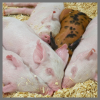
Piglets are particularly susceptible to stress due to the abrupt changes they face during weaning. These stressors cause a surge of oxidation and inflammation, particularly in the intestinal tract. Inflammation in the intestine causes a loss in its barrier function and facilitates the translocation of harmful compounds.
Read more
-

Oct
17
Interpretive Summary: Multi-omics analysis reveals associations between host gene expression, gut microbiota, and metabolites in chickens
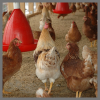
Egg-laying is a crucial and intricate trait in chickens. To comprehensively explore the egg-laying mechanism in chickens, we analyzed the host transcriptome, gut microbiota, and metabolome during the pre-laying, peak-laying, and late-laying periods. Transcriptome analysis of the tissues related to the hypothalamic-pituitary-liver (HPL) axis revealed the dynamic gene expression of hormone secretion and amino acid metabolism.
Read more
-

Oct
17
Interpretive Summary: Effects of a veterinary gastrointestinal diet on fecal characteristics, metabolites, and microbiota concentrations of adult cats treated with metronidazole

The objective of this study was to determine how a veterinary gastrointestinal diet impacts the fecal characteristics, metabolites, and microbiota concentrations of adult cats treated with metronidazole. All cats were fed a leading grocery brand diet (GBD) during a 2-wk baseline, dosed orally with metronidazole (20 mg/kg BW twice daily) for 2 wk, then randomly allotted to one of 2 treatments [GBD; BLUE Natural Veterinary Diet GI Gastrointestinal Support (BB)] and fed for 4 wk.
Read more
-

Oct
17
Interpretive Summary: Higher abundance of 2-dehydro-d-gluconate in the plasma of sub-fertile or infertile Bos taurus heifers
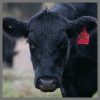
During the development of heifers for cow replacement, producers must invest substantial resources in each animal for over 15 mo. While the use of resources is equivalent across heifers being developed on a farm, a substantial proportion of the animals will not produce a calf.
Read more
-

Oct
10
Interpretive Summary: A review on the effect of soy bioactive components on growth and health outcomes in pigs and broiler chickens

Soybeans are commonly included in animal diets, often in the form of soybean meal, as a source of energy and high-quality protein. Aside from these macronutrient fractions, soy also includes many minor components that have the potential to both positively and negatively impact the growth and health of nonruminant animal species used in production agriculture.
Read more
-

Oct
10
Interpretive Summary: Reduction of particle size of field peas (Pisum sativum L.) increases net energy and digestibility of starch when fed to growing pigs, but there is no difference in nutritional value between peas from...

The objective of this research was to test the hypothesis that the particle size of field peas and the location where field peas are grown may affect the apparent total tract digestibility of nutrients and gross energy, concentrations of net energy (NE), the apparent ileal digestibility of starch, and the standardized ileal digestibility (SID) of crude protein (CP) and amino acids (AA).
Read more
-

Oct
10
Interpretive Summary: New findings on the genetic basis of feathered legs in chickens: association of CUBN gene mutations with feathered-leg phenotype

Birds display remarkable diversity in the distribution and morphology of scales and feathers on their legs. However, the genetic and developmental mechanisms controlling this diversity are complex and remain largely unknown. Feathered legs are a phenotypic trait of domestic chickens, which have undergone intense selection.
Read more
-

Oct
10
Interpretive Summary: Chicken meal is not an appropriate reference protein for estimating protein quality of ingredients used in extruded diets intended for dogs

Metabolic availability (MA) of an amino acid (AA) is the portion of a dietary AA that is both digestible and available for protein synthesis. Peas are a commonly used protein source in grain-free dog foods, often included in large proportions. Methionine (Met) is an essential AA and the first limiting AA in peas so knowing the MA of Met in peas can ensure sufficient bioavailable Met is provided in these diets.
Read more
-

Oct
10
Interpretive Summary: Technical note: assessing GPS sensor accuracy using real-time kinematic device for livestock tracking
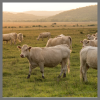
GPS sensors play a pivotal role in modern livestock tracking, enabling producers and researchers to monitor grazing livestock, understand their behavior, and assess health indicators. Despite their widespread use, effectively interpreting the gathered data poses challenges due to positioning inaccuracies.
Read more
-

Oct
10
Interpretive Summary: Effect of supplementing algae to breeding and early gestation first calf heifers on growth and reproduction

Docosahexaenoic acid (DHA, 22:6n-3) and eicosapentaenoic acid (EPA, 20:5n-3) are long-chain omega-3 poly-unsaturated fatty acids (PUFA) that have important biological effects on reproduction through their involvement in hormone and series 3 prostaglandin synthesis. Ruminant tissues are naturally almost devoid of omega-3 long-chain PUFA, specifically EPA and DHA.
Read more
-

Oct
03
Interpretive Summary: Effects of a Bacillus-based direct-fed microbial on performance, blood parameters, fecal characteristics, rumen morphometrics, and intestinal gene expression in finishing beef bulls
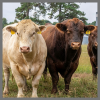
One of the main alternatives of additives to modulate the microbial population in the gastrointestinal tract (GIT), especially in the intestine, is the use of direct-fed microbials (DFM). This class of additives comprises all the feed products that contain a live or naturally occurring source of microorganism.
Read more
-

Oct
03
Interpretive Summary: Selenium suppressed the LPS-induced oxidative stress of bovine endometrial stromal cells through Nrf2 pathway with high cortisol background

The postpartum uterine infections seriously threaten the productive and reproductive performance of dairy cows. The elevated cortisol level after delivery can worsen infections. Selenium (Se) enhances disease resistance of dairy cows.
Read more
-

Oct
03
Interpretive Summary: Size matters: lower body weight pigs have a different response to immune challenge and amino acids supplementation above the estimated requirement compared to heavy pigs
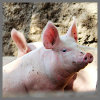
An immune challenge impacts pig welfare and may decrease growth and protein deposition. These may happen due to the different nutrient requirements of immune-challenged pigs compared to non-challenged. Dietary supplementation of tryptophan, threonine, and methionine has been proven to be a strategy to mitigate performance losses by supporting immune system functioning, maintaining gut barrier integrity, and reducing oxidative status.
Read more
-

Oct
03
Interpretive Summary: Effects of late gestational nutrient restriction on uterine artery blood flow, placental size, and cotyledonary mRNA expression in primiparous beef females
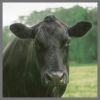
Nutrient requirements increase substantially during late gestation in the beef female to support fetal, uteroplacental, and mammary growth, and in the still-growing heifer, nutrients are also needed for maternal tissue growth. During pregnancy, the placenta serves as the interface for the metabolism and transport of nutrients, gases, and wastes between maternal and fetal circulations.
Read more
-

Oct
03
Interpretive Summary: Sward type alters enteric methane emissions, nitrogen output and the relative abundance of the rumen microbial ecosystem in sheep

Mitigating greenhouse gas emissions from ruminants fed forage diets will reduce the carbon footprint of livestock production and the agricultural sector globally, thereby improving the overall environmental sustainability of ruminant production. In the current study, sheep housed in metabolism crates were offered 5 differing zero-grazed sward types.
Read more
-

Sep
26
Washington Roundup - September 2024
.png?sfvrsn=c1d454d1_1)
With the fiscal year coming to an end on September 30th, Congress has limited time to pass stopgap legislation to avert a government shutdown. While there is broad recognition that a continuing resolution is needed, there are differing approaches being considered.
Read more
-

Sep
26
Interpretive Summary: Initial timing of alfalfa hay supplementation manipulates blood parameters, rumen gene expression, and epithelial microbiota in pre-weaning lambs

Recent studies have shown that in pre-weaning ruminants, the addition of alfalfa hay is beneficial for growth and rumen development. However, the effect of alfalfa supplementation timing on the growth of pre-weaning lambs remains still unclear.
Read more
-

Sep
26
Interpretive Summary: Comparison of the effects of alfalfa meal and sorghum distillery residue supplementation on the methane emissions in black-feathered Taiwan native chicken

In this study, researchers focused on addressing the crucial issue of global warming by tackling methane (CH4) emissions from chickens, an important source of greenhouse gases. We investigated the impact of adding alfalfa meal and sorghum distillery residues (SDRs) to the diets of Taiwan’s native black-feathered chickens.
Read more
 OctInterpretive Summary: Impacts of increasing levels of salt on intake, digestion, and rumen fermentation with beef cattle consuming low-quality forages
OctInterpretive Summary: Impacts of increasing levels of salt on intake, digestion, and rumen fermentation with beef cattle consuming low-quality forages Beef cattle are often provided supplements to compensate for seasonal nutrient deficiencies. However, one of the challenges to strategic supplementation is controlling individual intake variation. The most common method to regulate intake of self-fed supplements is the use of salt.
Beef cattle are often provided supplements to compensate for seasonal nutrient deficiencies. However, one of the challenges to strategic supplementation is controlling individual intake variation. The most common method to regulate intake of self-fed supplements is the use of salt. OctInterpretive Summary: Effects of fermented soybean meal and supplemental methionine and lysine on growth, digestibility, body composition, and amino acid composition of Beluga (Huso huso)
OctInterpretive Summary: Effects of fermented soybean meal and supplemental methionine and lysine on growth, digestibility, body composition, and amino acid composition of Beluga (Huso huso) The growing aquaculture production can greatly affect the aquafeed industry and cause problems, especially in providing fish meal (FM) for diets. Price and production instability in FM can restrict producers’ ability to produce aquafeed. Therefore, it is advised to use plant proteins such as soybean meal (SBM), which has high protein, reasonable price, and relatively balanced amino acids profile.
The growing aquaculture production can greatly affect the aquafeed industry and cause problems, especially in providing fish meal (FM) for diets. Price and production instability in FM can restrict producers’ ability to produce aquafeed. Therefore, it is advised to use plant proteins such as soybean meal (SBM), which has high protein, reasonable price, and relatively balanced amino acids profile. OctInterpretive Summary: A microencapsulated blend of botanicals supports weaning piglets during a lipopolysaccharide challenge by modulating liver inflammation and intestinal integrity
OctInterpretive Summary: A microencapsulated blend of botanicals supports weaning piglets during a lipopolysaccharide challenge by modulating liver inflammation and intestinal integrity Piglets are particularly susceptible to stress due to the abrupt changes they face during weaning. These stressors cause a surge of oxidation and inflammation, particularly in the intestinal tract. Inflammation in the intestine causes a loss in its barrier function and facilitates the translocation of harmful compounds.
Piglets are particularly susceptible to stress due to the abrupt changes they face during weaning. These stressors cause a surge of oxidation and inflammation, particularly in the intestinal tract. Inflammation in the intestine causes a loss in its barrier function and facilitates the translocation of harmful compounds. OctInterpretive Summary: Multi-omics analysis reveals associations between host gene expression, gut microbiota, and metabolites in chickens
OctInterpretive Summary: Multi-omics analysis reveals associations between host gene expression, gut microbiota, and metabolites in chickens Egg-laying is a crucial and intricate trait in chickens. To comprehensively explore the egg-laying mechanism in chickens, we analyzed the host transcriptome, gut microbiota, and metabolome during the pre-laying, peak-laying, and late-laying periods. Transcriptome analysis of the tissues related to the hypothalamic-pituitary-liver (HPL) axis revealed the dynamic gene expression of hormone secretion and amino acid metabolism.
Egg-laying is a crucial and intricate trait in chickens. To comprehensively explore the egg-laying mechanism in chickens, we analyzed the host transcriptome, gut microbiota, and metabolome during the pre-laying, peak-laying, and late-laying periods. Transcriptome analysis of the tissues related to the hypothalamic-pituitary-liver (HPL) axis revealed the dynamic gene expression of hormone secretion and amino acid metabolism. OctInterpretive Summary: Effects of a veterinary gastrointestinal diet on fecal characteristics, metabolites, and microbiota concentrations of adult cats treated with metronidazole
OctInterpretive Summary: Effects of a veterinary gastrointestinal diet on fecal characteristics, metabolites, and microbiota concentrations of adult cats treated with metronidazole The objective of this study was to determine how a veterinary gastrointestinal diet impacts the fecal characteristics, metabolites, and microbiota concentrations of adult cats treated with metronidazole. All cats were fed a leading grocery brand diet (GBD) during a 2-wk baseline, dosed orally with metronidazole (20 mg/kg BW twice daily) for 2 wk, then randomly allotted to one of 2 treatments [GBD; BLUE Natural Veterinary Diet GI Gastrointestinal Support (BB)] and fed for 4 wk.
The objective of this study was to determine how a veterinary gastrointestinal diet impacts the fecal characteristics, metabolites, and microbiota concentrations of adult cats treated with metronidazole. All cats were fed a leading grocery brand diet (GBD) during a 2-wk baseline, dosed orally with metronidazole (20 mg/kg BW twice daily) for 2 wk, then randomly allotted to one of 2 treatments [GBD; BLUE Natural Veterinary Diet GI Gastrointestinal Support (BB)] and fed for 4 wk. OctInterpretive Summary: Higher abundance of 2-dehydro-d-gluconate in the plasma of sub-fertile or infertile Bos taurus heifers
OctInterpretive Summary: Higher abundance of 2-dehydro-d-gluconate in the plasma of sub-fertile or infertile Bos taurus heifers During the development of heifers for cow replacement, producers must invest substantial resources in each animal for over 15 mo. While the use of resources is equivalent across heifers being developed on a farm, a substantial proportion of the animals will not produce a calf.
During the development of heifers for cow replacement, producers must invest substantial resources in each animal for over 15 mo. While the use of resources is equivalent across heifers being developed on a farm, a substantial proportion of the animals will not produce a calf. OctInterpretive Summary: A review on the effect of soy bioactive components on growth and health outcomes in pigs and broiler chickens
OctInterpretive Summary: A review on the effect of soy bioactive components on growth and health outcomes in pigs and broiler chickens Soybeans are commonly included in animal diets, often in the form of soybean meal, as a source of energy and high-quality protein. Aside from these macronutrient fractions, soy also includes many minor components that have the potential to both positively and negatively impact the growth and health of nonruminant animal species used in production agriculture.
Soybeans are commonly included in animal diets, often in the form of soybean meal, as a source of energy and high-quality protein. Aside from these macronutrient fractions, soy also includes many minor components that have the potential to both positively and negatively impact the growth and health of nonruminant animal species used in production agriculture. OctInterpretive Summary: Reduction of particle size of field peas (Pisum sativum L.) increases net energy and digestibility of starch when fed to growing pigs, but there is no difference in nutritional value between peas from...
OctInterpretive Summary: Reduction of particle size of field peas (Pisum sativum L.) increases net energy and digestibility of starch when fed to growing pigs, but there is no difference in nutritional value between peas from... The objective of this research was to test the hypothesis that the particle size of field peas and the location where field peas are grown may affect the apparent total tract digestibility of nutrients and gross energy, concentrations of net energy (NE), the apparent ileal digestibility of starch, and the standardized ileal digestibility (SID) of crude protein (CP) and amino acids (AA).
The objective of this research was to test the hypothesis that the particle size of field peas and the location where field peas are grown may affect the apparent total tract digestibility of nutrients and gross energy, concentrations of net energy (NE), the apparent ileal digestibility of starch, and the standardized ileal digestibility (SID) of crude protein (CP) and amino acids (AA). OctInterpretive Summary: New findings on the genetic basis of feathered legs in chickens: association of CUBN gene mutations with feathered-leg phenotype
OctInterpretive Summary: New findings on the genetic basis of feathered legs in chickens: association of CUBN gene mutations with feathered-leg phenotype Birds display remarkable diversity in the distribution and morphology of scales and feathers on their legs. However, the genetic and developmental mechanisms controlling this diversity are complex and remain largely unknown. Feathered legs are a phenotypic trait of domestic chickens, which have undergone intense selection.
Birds display remarkable diversity in the distribution and morphology of scales and feathers on their legs. However, the genetic and developmental mechanisms controlling this diversity are complex and remain largely unknown. Feathered legs are a phenotypic trait of domestic chickens, which have undergone intense selection. OctInterpretive Summary: Chicken meal is not an appropriate reference protein for estimating protein quality of ingredients used in extruded diets intended for dogs
OctInterpretive Summary: Chicken meal is not an appropriate reference protein for estimating protein quality of ingredients used in extruded diets intended for dogs Metabolic availability (MA) of an amino acid (AA) is the portion of a dietary AA that is both digestible and available for protein synthesis. Peas are a commonly used protein source in grain-free dog foods, often included in large proportions. Methionine (Met) is an essential AA and the first limiting AA in peas so knowing the MA of Met in peas can ensure sufficient bioavailable Met is provided in these diets.
Metabolic availability (MA) of an amino acid (AA) is the portion of a dietary AA that is both digestible and available for protein synthesis. Peas are a commonly used protein source in grain-free dog foods, often included in large proportions. Methionine (Met) is an essential AA and the first limiting AA in peas so knowing the MA of Met in peas can ensure sufficient bioavailable Met is provided in these diets. OctInterpretive Summary: Technical note: assessing GPS sensor accuracy using real-time kinematic device for livestock tracking
OctInterpretive Summary: Technical note: assessing GPS sensor accuracy using real-time kinematic device for livestock tracking GPS sensors play a pivotal role in modern livestock tracking, enabling producers and researchers to monitor grazing livestock, understand their behavior, and assess health indicators. Despite their widespread use, effectively interpreting the gathered data poses challenges due to positioning inaccuracies.
GPS sensors play a pivotal role in modern livestock tracking, enabling producers and researchers to monitor grazing livestock, understand their behavior, and assess health indicators. Despite their widespread use, effectively interpreting the gathered data poses challenges due to positioning inaccuracies. OctInterpretive Summary: Effect of supplementing algae to breeding and early gestation first calf heifers on growth and reproduction
OctInterpretive Summary: Effect of supplementing algae to breeding and early gestation first calf heifers on growth and reproduction Docosahexaenoic acid (DHA, 22:6n-3) and eicosapentaenoic acid (EPA, 20:5n-3) are long-chain omega-3 poly-unsaturated fatty acids (PUFA) that have important biological effects on reproduction through their involvement in hormone and series 3 prostaglandin synthesis. Ruminant tissues are naturally almost devoid of omega-3 long-chain PUFA, specifically EPA and DHA.
Docosahexaenoic acid (DHA, 22:6n-3) and eicosapentaenoic acid (EPA, 20:5n-3) are long-chain omega-3 poly-unsaturated fatty acids (PUFA) that have important biological effects on reproduction through their involvement in hormone and series 3 prostaglandin synthesis. Ruminant tissues are naturally almost devoid of omega-3 long-chain PUFA, specifically EPA and DHA. OctInterpretive Summary: Effects of a Bacillus-based direct-fed microbial on performance, blood parameters, fecal characteristics, rumen morphometrics, and intestinal gene expression in finishing beef bulls
OctInterpretive Summary: Effects of a Bacillus-based direct-fed microbial on performance, blood parameters, fecal characteristics, rumen morphometrics, and intestinal gene expression in finishing beef bulls One of the main alternatives of additives to modulate the microbial population in the gastrointestinal tract (GIT), especially in the intestine, is the use of direct-fed microbials (DFM). This class of additives comprises all the feed products that contain a live or naturally occurring source of microorganism.
One of the main alternatives of additives to modulate the microbial population in the gastrointestinal tract (GIT), especially in the intestine, is the use of direct-fed microbials (DFM). This class of additives comprises all the feed products that contain a live or naturally occurring source of microorganism. OctInterpretive Summary: Selenium suppressed the LPS-induced oxidative stress of bovine endometrial stromal cells through Nrf2 pathway with high cortisol background
OctInterpretive Summary: Selenium suppressed the LPS-induced oxidative stress of bovine endometrial stromal cells through Nrf2 pathway with high cortisol background The postpartum uterine infections seriously threaten the productive and reproductive performance of dairy cows. The elevated cortisol level after delivery can worsen infections. Selenium (Se) enhances disease resistance of dairy cows.
The postpartum uterine infections seriously threaten the productive and reproductive performance of dairy cows. The elevated cortisol level after delivery can worsen infections. Selenium (Se) enhances disease resistance of dairy cows. OctInterpretive Summary: Size matters: lower body weight pigs have a different response to immune challenge and amino acids supplementation above the estimated requirement compared to heavy pigs
OctInterpretive Summary: Size matters: lower body weight pigs have a different response to immune challenge and amino acids supplementation above the estimated requirement compared to heavy pigs An immune challenge impacts pig welfare and may decrease growth and protein deposition. These may happen due to the different nutrient requirements of immune-challenged pigs compared to non-challenged. Dietary supplementation of tryptophan, threonine, and methionine has been proven to be a strategy to mitigate performance losses by supporting immune system functioning, maintaining gut barrier integrity, and reducing oxidative status.
An immune challenge impacts pig welfare and may decrease growth and protein deposition. These may happen due to the different nutrient requirements of immune-challenged pigs compared to non-challenged. Dietary supplementation of tryptophan, threonine, and methionine has been proven to be a strategy to mitigate performance losses by supporting immune system functioning, maintaining gut barrier integrity, and reducing oxidative status. OctInterpretive Summary: Effects of late gestational nutrient restriction on uterine artery blood flow, placental size, and cotyledonary mRNA expression in primiparous beef females
OctInterpretive Summary: Effects of late gestational nutrient restriction on uterine artery blood flow, placental size, and cotyledonary mRNA expression in primiparous beef females Nutrient requirements increase substantially during late gestation in the beef female to support fetal, uteroplacental, and mammary growth, and in the still-growing heifer, nutrients are also needed for maternal tissue growth. During pregnancy, the placenta serves as the interface for the metabolism and transport of nutrients, gases, and wastes between maternal and fetal circulations.
Nutrient requirements increase substantially during late gestation in the beef female to support fetal, uteroplacental, and mammary growth, and in the still-growing heifer, nutrients are also needed for maternal tissue growth. During pregnancy, the placenta serves as the interface for the metabolism and transport of nutrients, gases, and wastes between maternal and fetal circulations. OctInterpretive Summary: Sward type alters enteric methane emissions, nitrogen output and the relative abundance of the rumen microbial ecosystem in sheep
OctInterpretive Summary: Sward type alters enteric methane emissions, nitrogen output and the relative abundance of the rumen microbial ecosystem in sheep Mitigating greenhouse gas emissions from ruminants fed forage diets will reduce the carbon footprint of livestock production and the agricultural sector globally, thereby improving the overall environmental sustainability of ruminant production. In the current study, sheep housed in metabolism crates were offered 5 differing zero-grazed sward types.
Mitigating greenhouse gas emissions from ruminants fed forage diets will reduce the carbon footprint of livestock production and the agricultural sector globally, thereby improving the overall environmental sustainability of ruminant production. In the current study, sheep housed in metabolism crates were offered 5 differing zero-grazed sward types. SepWashington Roundup - September 2024
SepWashington Roundup - September 2024.png?sfvrsn=c1d454d1_1) With the fiscal year coming to an end on September 30th, Congress has limited time to pass stopgap legislation to avert a government shutdown. While there is broad recognition that a continuing resolution is needed, there are differing approaches being considered.
With the fiscal year coming to an end on September 30th, Congress has limited time to pass stopgap legislation to avert a government shutdown. While there is broad recognition that a continuing resolution is needed, there are differing approaches being considered. SepInterpretive Summary: Initial timing of alfalfa hay supplementation manipulates blood parameters, rumen gene expression, and epithelial microbiota in pre-weaning lambs
SepInterpretive Summary: Initial timing of alfalfa hay supplementation manipulates blood parameters, rumen gene expression, and epithelial microbiota in pre-weaning lambs Recent studies have shown that in pre-weaning ruminants, the addition of alfalfa hay is beneficial for growth and rumen development. However, the effect of alfalfa supplementation timing on the growth of pre-weaning lambs remains still unclear.
Recent studies have shown that in pre-weaning ruminants, the addition of alfalfa hay is beneficial for growth and rumen development. However, the effect of alfalfa supplementation timing on the growth of pre-weaning lambs remains still unclear. SepInterpretive Summary: Comparison of the effects of alfalfa meal and sorghum distillery residue supplementation on the methane emissions in black-feathered Taiwan native chicken
SepInterpretive Summary: Comparison of the effects of alfalfa meal and sorghum distillery residue supplementation on the methane emissions in black-feathered Taiwan native chicken In this study, researchers focused on addressing the crucial issue of global warming by tackling methane (CH4) emissions from chickens, an important source of greenhouse gases. We investigated the impact of adding alfalfa meal and sorghum distillery residues (SDRs) to the diets of Taiwan’s native black-feathered chickens.
In this study, researchers focused on addressing the crucial issue of global warming by tackling methane (CH4) emissions from chickens, an important source of greenhouse gases. We investigated the impact of adding alfalfa meal and sorghum distillery residues (SDRs) to the diets of Taiwan’s native black-feathered chickens.



